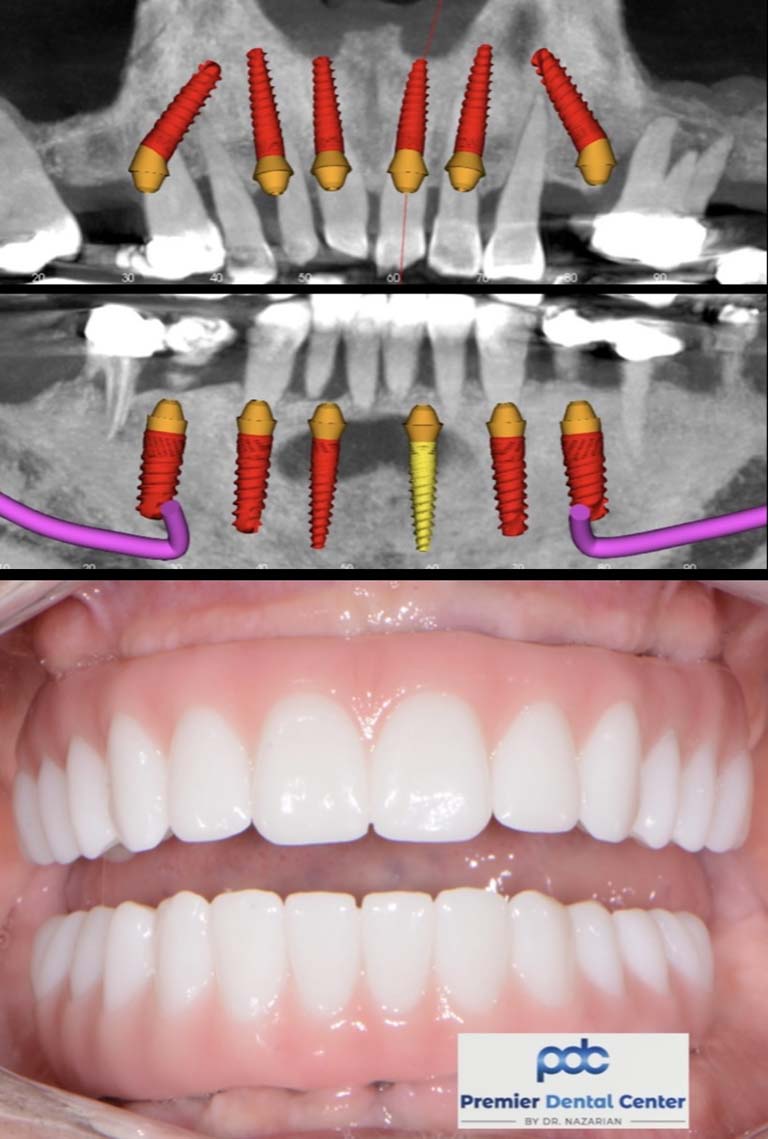The Ultimate Guide To Dental Sense
The Ultimate Guide To Dental Sense
Blog Article
Fascination About Dental Sense
Table of ContentsSome Of Dental SenseThe Facts About Dental Sense RevealedWhat Does Dental Sense Do?Some Known Factual Statements About Dental Sense
are medical devices surgically dental implanted right into the jaw to recover a person's capacity to chew or their appearance. They provide support for artificial (phony) teeth, such as crowns, bridges, or dentures. When a tooth is lost due to injury or illness, an individual can experience problems such as quick bone loss, malfunctioning speech, or changes to chewing patterns that result in pain.Dental dental implant systems contain an oral implant body and oral implant joint and may likewise include a joint addiction screw. Root canal procedure. The oral implant body is surgically placed in the jawbone in place of the tooth's origin. The dental implant joint is typically affixed to the implant body by the abutment addiction screw and extends through periodontals right into the mouth to support the connected fabricated teeth
(https://dentalsense1.wordpress.com/2025/01/11/dental-implants-root-canal-procedures-professional-teeth-whitening/)Structure of The Dental Implant System choosing dental implants, talk with your oral company about the prospective benefits and risks, and whether you are a prospect for the treatment. Things to think about: Your general wellness is a crucial element in figuring out whether you are a good candidate for oral implants, the length of time it will require to heal, and how much time the dental implant might remain in location.
Smoking may impact the healing procedure and decrease the lasting success of the dental implant. The recovery procedure for the dental implant body may take a number of months or longer, during which time you typically have a temporary joint in place of the tooth. the dental implant procedure: Very carefully comply with the oral hygiene instructions offered to you by your oral company.
The Ultimate Guide To Dental Sense
Implant failing can result in the requirement for an additional surgical treatment to fix or change the implant system. Brings back the ability to chew Recovers cosmetic look Aids keep the jawbone from reducing as a result of bone loss Protects the wellness of the surrounding bone and periodontals Helps maintain surrounding (nearby) teeth stable Enhances lifestyle Damages to surrounding all-natural teeth during dental implant positioning Injury to the surrounding cells throughout surgery, such as sinus opening Injury during surgical treatment (for instance, crack of surrounding jawbone) Insufficient feature, such as seeming like the teeth do not attack with each other usually An experience that the tooth is loosened or turning in place resulting from a joint screw loosening Implant body failing (looseness of the implant body) due to systemic infection, which may be most likely in patients with unchecked diabetes as a result of neighborhood infection in bone and gums supporting the dental implant body because of delayed recovery, which might be a lot more likely in clients who smoke Trouble cleansing the gum tissues around the implant, causing inadequate dental health Unattended gum illness Post-surgical tingling due to nerve impingement or damages Constantly inform healthcare suppliers and imaging technicians that you have dental implants prior to any magnetic resonance imaging (MRI) or x-ray treatments.
FDA is not conscious of any type of unfavorable events reported for MRI or x-ray procedures with dental implants. Oral implants systems are normally made from materials that comply with global consensus standards of the International Organization for Standardization (ISO) or ASTM International. These standards have information of what makes a risk-free material.

An oral implant is a structure that changes a missing tooth. With screw-like gadgets, the cosmetic surgeon inserts a dental implant into the jawbone, and it works as a support for a synthetic tooth, called a crown. A tool called a joint connects the man-made tooth to the oral implant. The crown is tailor-made to fit the person's mouth and match the shade of their teeth.
Facts About Dental Sense Uncovered
Some individuals are not eligible for oral implant surgical procedure. It is for oral specialists to operate individuals with: intense illnessuncontrollable metabolic diseasebone or soft cells condition or infectionIf these problems are settled, an individual can have the surgical treatment. In, oral specialists avoid operating on individuals with: If individuals with any of the above go through dental implant surgery, there is a higher threat of the dental implant failing.

Dental implant surgery is a customized process. It's not the exact same for every person. The following provides a general introduction of what you can expect your dental expert, dental specialist, periodontist or prosthodontist to do: Position the dental implant surgically. Give you time to heal. Attach the post and final crown, bridge or denture.
Next, your cosmetic surgeon will thoroughly put the oral implant into your jaw. Your surgeon will certainly rearrange your periodontals and shut the cut with stitches. If your implant is near the front of your mouth, your dental expert will make a temporary tooth for you to wear till you recover. By doing this, you will not have a space in your smile while you recuperate.
Get This Report on Dental Sense
Your supplier can inform you what to expect in your situation. During the healing this page phase, your jawbone ought to fuse to the oral implant. This process, called osseointegration, is critical for security and lasting success. This process can take anywhere from three to nine months. Sometimes, it might take much longer.
Once your implant heals, your dental practitioner can affix the abutment (little port message) and your final restoration (crown, bridge or denture). This normally takes concerning one hour to finish and might require a 2nd small surgical procedure. You shouldn't feel any type of pain throughout your dental implant treatment due to the fact that your service provider will utilize drug to numb your periodontals.
Report this page